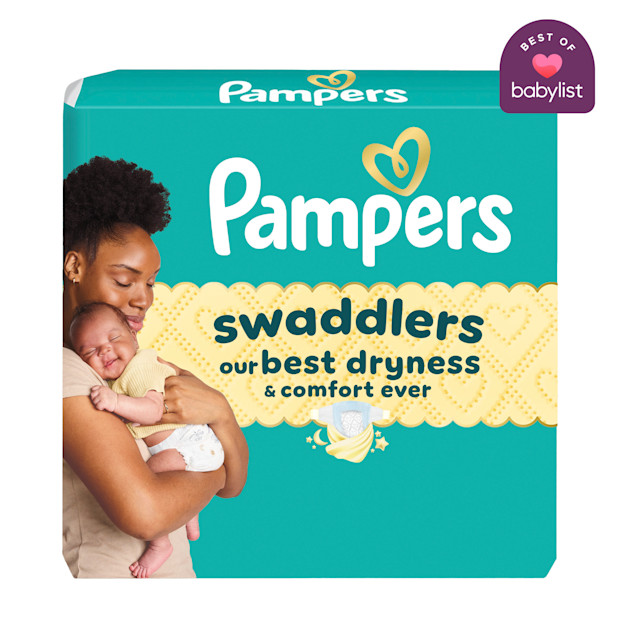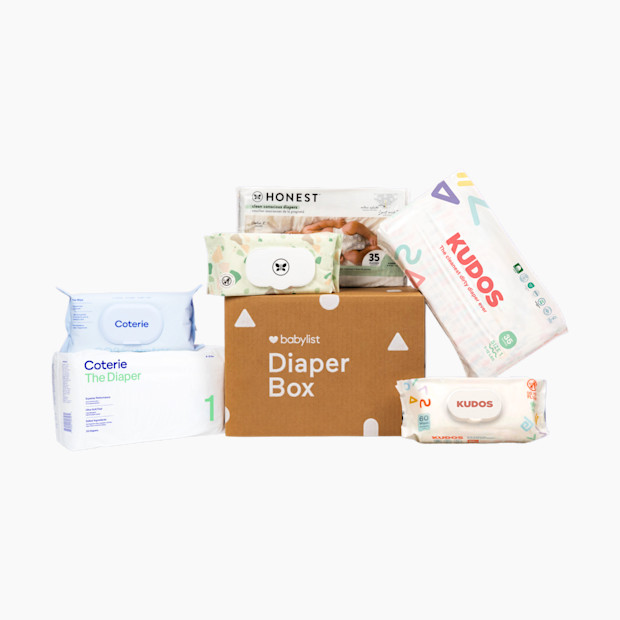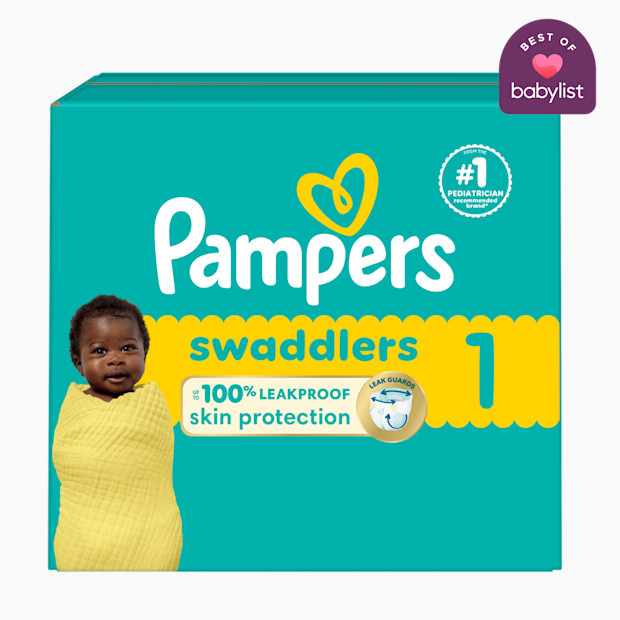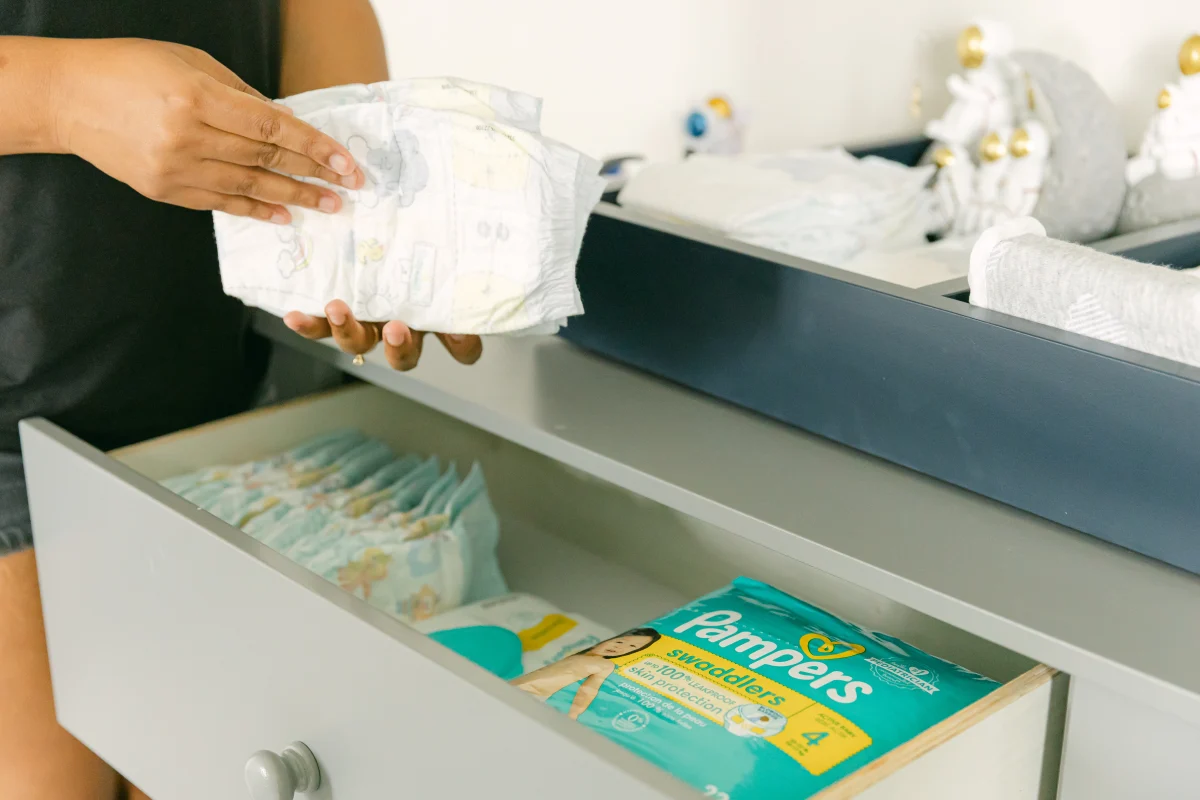
How Many Diapers Do I Need for Baby's First Year?
Babies go through a lot of diapers. Here's how many you'll need for the first 12 months—plus how many to put on your registry.

In This Article
While building your baby registry, it can be a lot of fun to focus on getting the best bouncer and cute crib sheets for your baby. And while those are nice to have, there’s one thing you’ll rely on more than anything else as a new parent: diapers.
How many newborn diapers do I need?
In the first month of life, newborns average about 10 to 12 diaper changes per day, says Dr. Joel “Gator” Warsh, an LA-based pediatrician and author of Parenting at Your Child's Pace: The Integrative Pediatrician’s Guide to the First Three Years. You can plan to change your baby’s diaper after every feeding during that first month (about every two to three hours), which amounts to around 325 newborn diapers total for the first four weeks.
We won’t lie; that’s a lot of diapers in a short amount of time. But the good news is that a baby’s bladder grows with age, so you’ll change fewer diapers as they get older. “Between two and three months, the number decreases to around eight to ten diapers daily,” Dr. Gator says. “In the phase spanning from three to six months, it further reduces to about six to eight diapers per day. Beyond six months, babies generally use around five diapers each day.” So the days of changing diapers every two hours won’t last forever, we promise!
But before you go out and buy 325 newborn-size diapers to prep for that first month, keep reading—you may not need to buy newborn diapers at all.
How many diapers do I need in the first year?
“On average, a baby will go through approximately 2,500 to 3,000 diapers within their first year,” Dr. Gator says. While you definitely don’t have to buy them all at once, your baby shower is a great time to start a diaper stockpile if you have the space to store them.
When you’re creating your baby registry, you can register for enough diapers for an entire year by adding individual boxes of diapers for people to give you as gifts, creating a diaper cash fund so you can purchase the diapers yourself later or registering for a diaper subscription service.
How to register for disposable diapers
To help you build up a big diaper stash before your due date, here are tips on everything from how many diapers to register for to how to figure out what size diapers you’ll need for each stage.
How many diapers to register for
Here’s an estimate of what to register for if you’re looking to build out your diaper supply for the first 12 months:
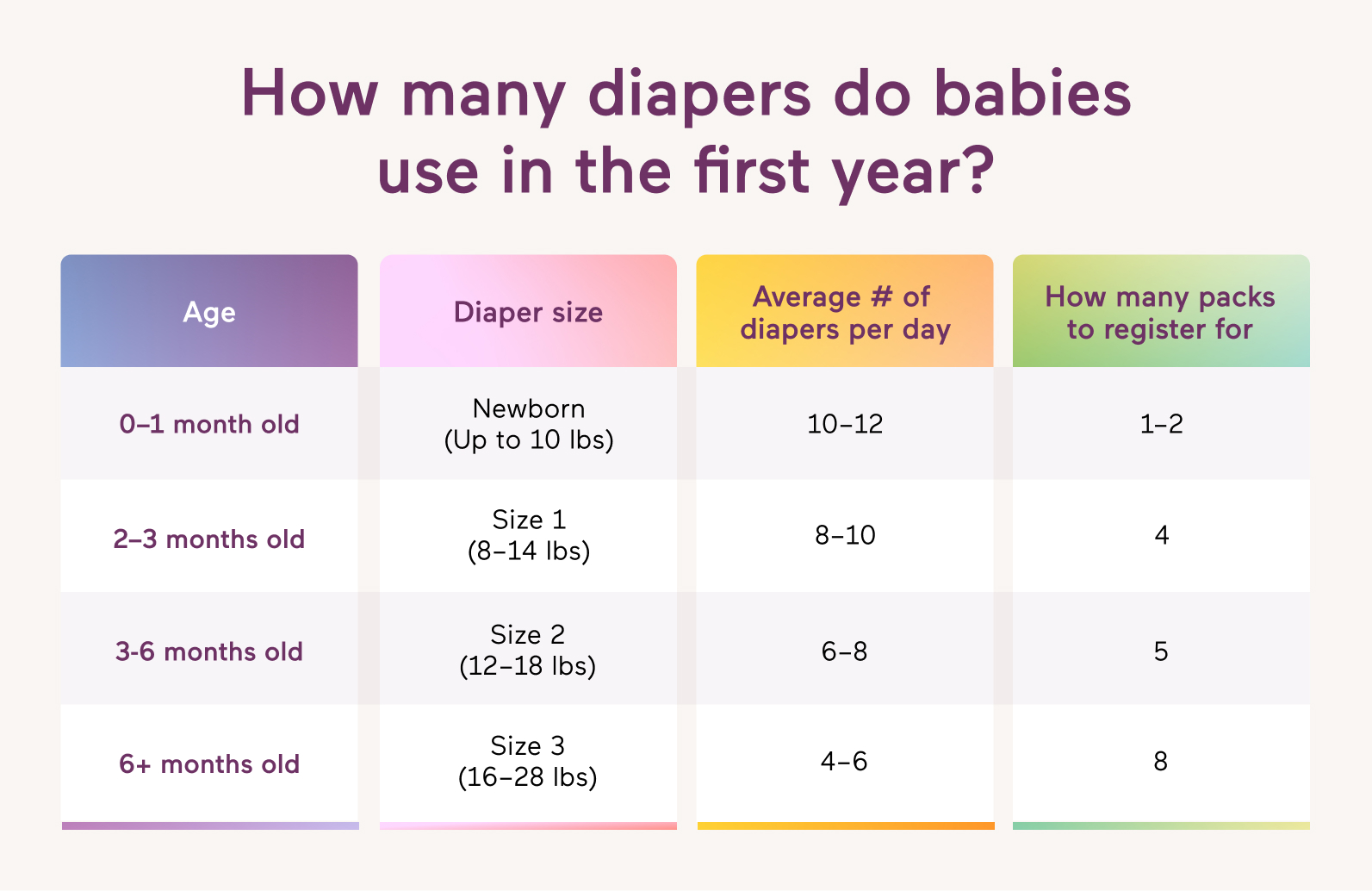
Don’t focus on the newborn sizes
On average, newborn size diapers fit babies up to nine or ten pounds. So if your baby is born weighing nine pounds or more, you’re probably better off skipping the newborn diapers completely and going straight to size 1. Also take into account that a newborn will often gain up to three pounds in their first month, so if they are able to fit into newborn size diapers when they’re born, they likely won’t be in them for very long. Besides, if you give birth in a hospital, your care team will send you home with an armful of newborn diapers, so you probably won’t need to buy a lot anyway.
Register for multiple sizes
Although newborn diapers are the most common size people typically gift at baby showers, you probably don’t need to register for more than one or two packs of newborn diapers (120-240 count). Instead, register for sizes your baby will grow into over their first six months—you’d be amazed at how quickly those months will go by, and it’ll be even better if you don’t have to shop for diapers in the meantime.
As you’re adding different diaper sizes to your registry, remember that sizes are based on baby’s weight, not their age.
If you have limited space, the bulk of your diaper collection should be for sizes 1 and 2. These diapers generally fit babies up to 18 pounds, depending on the brand.
If you have enough storage space, we recommend registering for size 3 as well, which should last you through your baby’s first birthday. We don’t recommend registering for diapers above size 3, since your little one likely won’t be wearing size 4 and beyond until after their first birthday.
Register for multiple brands
You really won’t know what brand or style of diaper works best for your baby until you try them, so we recommend testing out a variety of diapers. It would be a bummer to receive four jumbo boxes of one type of diaper, only to find out after just a few days that it gives your baby a rash or they constantly leak out of it. Registering for small bags of several different size 1 brands—like what you get in the Babylist Diaper Box—will make it easier to find the best diaper for your baby early on, so you know what brand to stick to until they’re potty trained (which can’t come soon enough).
If you end up not liking a particular brand but you’re stuck with more boxes, or if you have a ton of diapers left over after baby has moved up to the next size, you can always exchange unopened diaper boxes or bags for your preferred brand or size (Target usually accepts diaper returns/exchanges with no receipt), or you can donate to local shelters.
Consider the cost per diaper
Bags of diapers contain fewer diapers than boxes, so many parents go the bag route for the newborn size to prevent over-ordering (though one jumbo box of newborn-size diapers will last about two weeks, on average). For all the other sizes, a box is usually the more affordable option because the per-diaper cost is less. Like this:
A bag of Size 1 Pampers Swaddlers (32 count) averages $0.40 per diaper
A box of Size 1 Pampers Swaddlers (164 count) averages $0.27 a diaper
(Based on Target prices in July 2024)
Save money on diapers over time
If you don’t receive lots of diapers from your registry and end up needing to buy them yourself, consider subscribe-and-save options from online retailers like Amazon, where you can save money (about 5% per order) when you have diapers delivered on a regular schedule.
Register for gift cards instead
Don’t have enough space to store lots of diaper boxes ahead of time? Register for gift cards or a diaper cash fund and use them to buy diapers later.
How many cloth diapers do I need?
If you want to do cloth diapering, you might still want disposable diapers on reserve, even if you plan on running the wash cycle every day. Some parents who use cloth diapers choose to use disposable diapers for the first month, simply because newborns go through so many diapers per day.
But if you do want to invest in newborn cloth sizes, have at least 20 on hand (trust us, it’s not too many!). Keep in mind, your baby may not fit into these for long.
How often you plan on doing laundry influences the amount of cloth diapers you’ll need to have on hand. Most people like to have 24 cloth diapers total, but you could get away with as few as 14 if you don’t mind washing them every day.
Whether you opt for disposable or cloth diapers, you might not know what works best on your baby right away. And that’s okay—you’ll figure it out through a bit of trial and error. Get a feel for what you and your baby like by adding a variety of diaper brands and sizes to your registry (like the Babylist Diaper Box) and then experimenting once your baby arrives.

